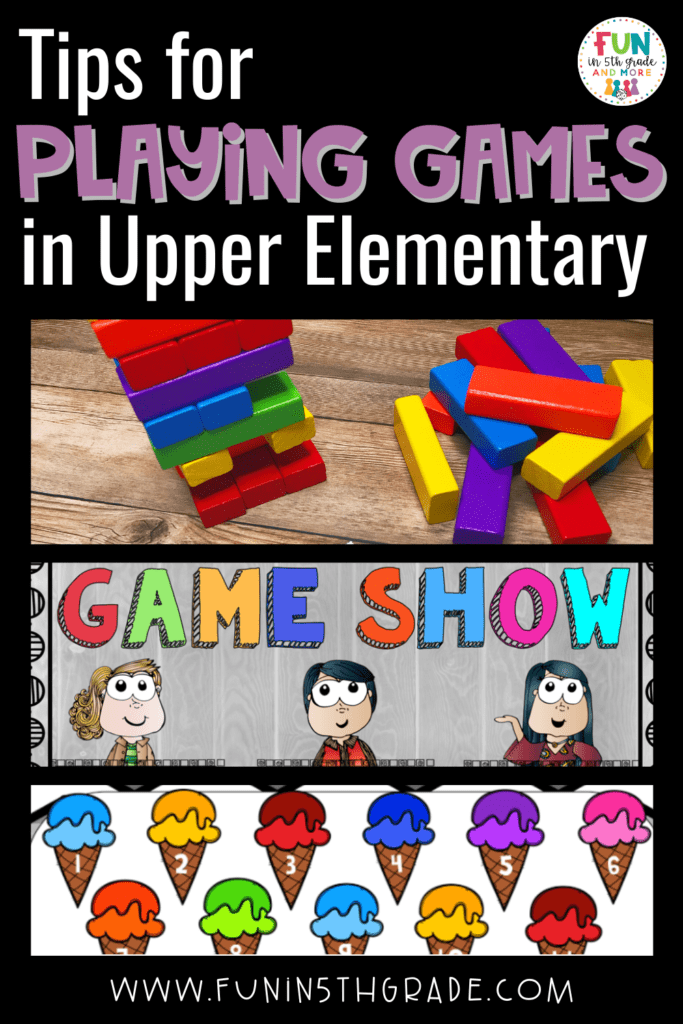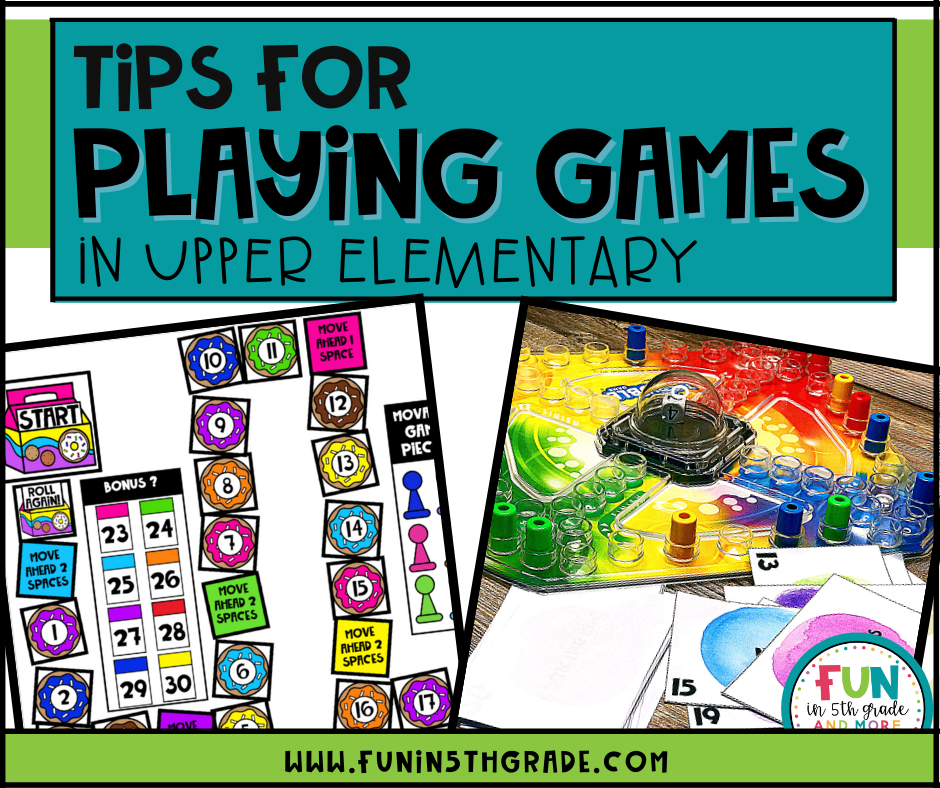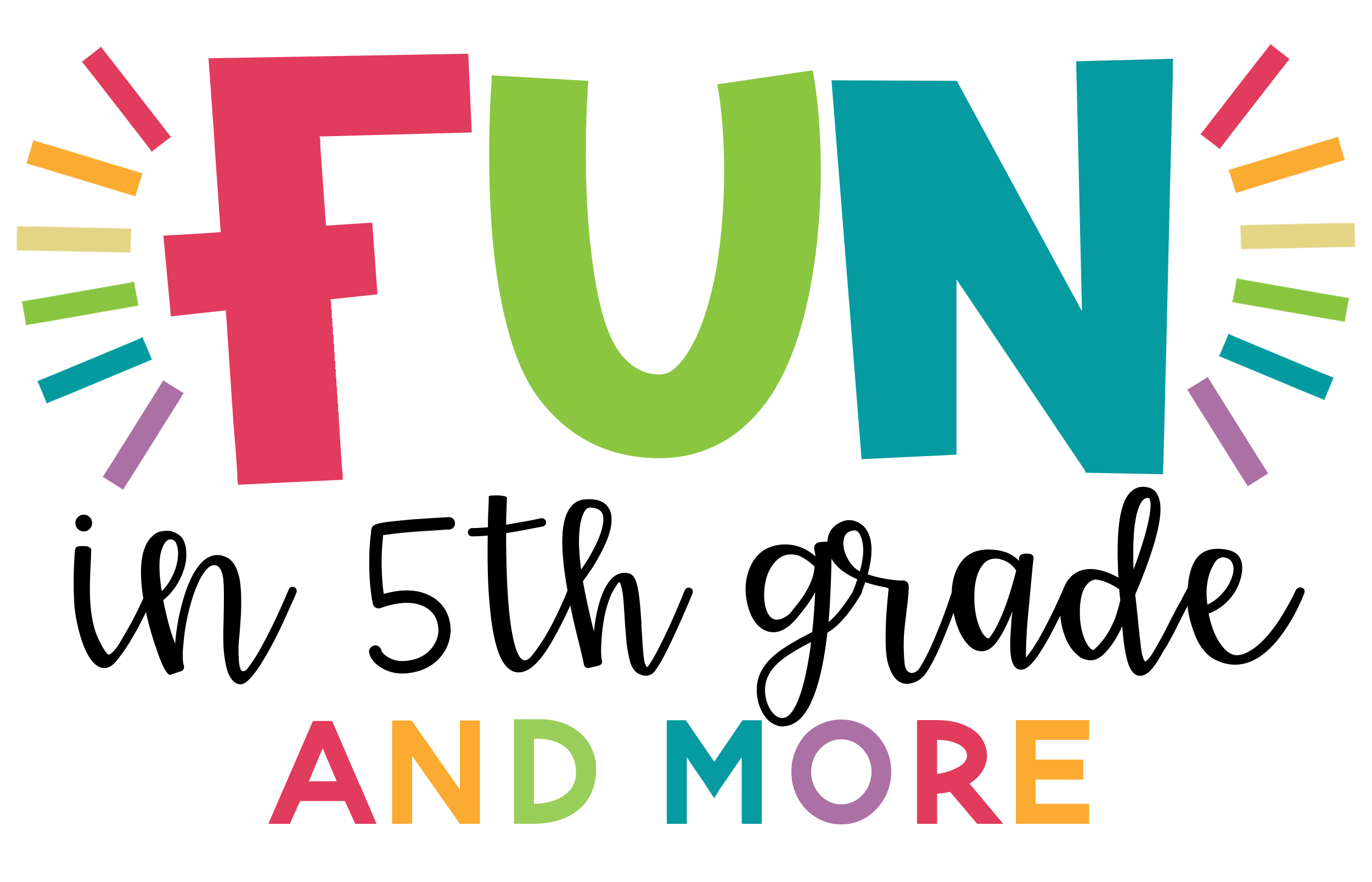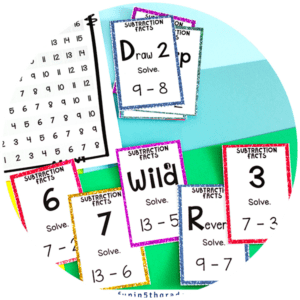
Playing games in the classroom doesn’t have to result in chaos. Try some of these tips to help set expectations as you get started with games in your classroom.
When I mention playing a game in your classroom, what is your gut response?
Are you excited, joyful, cautious?
Lots of teachers feel apprehension about trying new activities in the classroom; especially activities that result in letting the students work in groups away from the teacher’s watchful eyes.
I get that. We have all been in the position where what we thought would be an awesome independent activity during center time turned into a raucous event of cards flying around the room, and students either sleeping, providing inappropriate answers to questions, or yelling at each other about…who knows what.
Fight or Flight: Tips for Playing Games in the Classroom
As teachers we have ‘evolved’ as a result of our school surroundings and our flight or fight instinct tends toward the flight response. It isn’t that we are opposed to new ideas…we just want someone else to try it first, tell us how it goes, and then give us all of their best ideas for implementing the idea in a way that won’t completely disrupt the unity we have carefully built in our classrooms.
Well, when it comes to games such as U-Know, our Digital Board Games, and our digital Game Shows, we have conquered the beast and will now share our best practices so that others may learn from our adventures.
All silly analogies aside, we’ve played a lot of games in our classrooms over the years, and these are our best tips and tricks to setting up your students for success when playing games in the classroom.
Tip #1: Pre-teach
Before setting your students off with a new game and a rules sheet, spend some time in your classroom teaching the students about the game and practicing in a controlled environment.
- Start by going through the rules, and answering questions students have for all the ‘what if’ scenarios they foresee occurring while playing in small groups. Students always have ‘what if’ scenarios, and we may as well let them work those out now.
- Next, play a practice round as a full class or have a small group demonstrate the playing of the game. You can even have students do this at an earlier time and record them playing. This recording can then be shown to groups who have forgotten how to play later.
- After demonstrating the rules or game play with the whole class, break them up into smaller groups, and have the whole class play at the same time in small groups as you move about the room and check in with students to make sure they all understand the appropriate way to play the game.
- After playing, review the rule sheet, and ask the students if anything needs to be added to the rule sheet to prevent issues in the future. Maybe they need a rule rephrased or an example provided. Listen to their suggestions, and implement them before you assign the game the next time.
Tip #2: Setting Expectations (or Norms)
Every time you prepare to use the game, set expectations with students on how you’d like them to use the game. Consider setting classroom norms or expectations around the following points.

- Volume of voices
- What good participating looks like
- Appropriate ways to sit
- What to do if people aren’t playing fairly
- When and how often to use answer keys
- What to do if people are inappropriate
- How long the game should take to play
- What to do if there are disagreements about answers
Tip #3: Make EVERY Game Full Participation
Many of the games we have available require students to answer questions during each turn, to allow for all students to participate during each question, provide the students with whiteboards. During the game, every student will answer every question on their whiteboard. Any student wo has the correct answer gets to roll and move.
When playing U-Know, rotate the people who are checking answers and asking questions. These rotating rolls will keep the students involved even if they aren’t the ones answering the questions.
Use recording sheets during games, so that every student is answering every question and turning in their answers at the end of the game.
When using our Game Shows, ask every student to answer every questions (either on a whiteboard or on a recording sheet), and each person or group gets the point if correct, not just the group that picked the category. If you don’t want to give everyone a point, you can always allow any students with the correct recorded answer to ‘steal’ the point as long as they have an answer written.
When playing other games (i.e. Jenga, Candyland, etc) I always make all student answer every card and then check the answer key. Everyone who is correct gets a turn to move or pull a piece or roll the die.
Again, if you don’t like the idea of giving every student points all the time, consider this next strategy for assigning the winning point when many students have the right answers.
Before starting game play, assign every student a physical game piece. This can be a Scrabble tile with the first letter of their name, a colored game piece from a game like Candyland or Sorry, or something else. While playing the games, every student who gets a correct answer then gets to put their game piece in a cup, once all of the students who have the correct answer have put their game piece in the cup, an assigned student will randomly pull one out, the student who’s piece is pulled out of the cup, is the one who gets the point.
Tip #4: Have a Back-Up Plan
In our dream classrooms every student will participate in the games the right way all the time, but we all know our students well enough to know that isn’t going to happen.
One thing to remember is that students will refuse to participate in games ‘correctly’ for many reasons, and most of the time they have nothing to do with the game.
Some students may have not gotten a lot of sleep the night before or didn’t have an adequate breakfast and are dealing with tummy rumblings. Still others may be going through an ‘I’m too cool’ phase or feel insecure about the knowledge the game is testing.
No matter the reason, we don’t use these students as a reason to not play the games in class. Instead, we always have a back up plan for these students instead.
Here are some suggested activities for students who don’t want to participate in games with others or who are finding it hard to participate appropriately in games with others. Some of these ideas are for students who are having issues with behavior, and some of them are for students who are not engaged in the activity for one reason or another.
- The student can do extra practice in workbooks on the same topic that the game covers.
- The student can sit back at a distance, listen to the questions when they are read aloud, and record answers on a recording sheet to turn in after the game, but they don’t actually participate in the game.
- You can use the task cards from the game, and create an easy question/response worksheet that students can complete on their own.
- Gather the students who aren’t participating together and ask them to create their own game based on the same content.
- Ask the student to use a sample size of the task cards to create additional task cards to be used in other variations of the game.
- Consider other handouts, lessons, etc. that cover the same topic that could be made easily available for students who can’t handle playing games with others.
- Consider providing a ‘no-fail’ solution to the game. If students are feeling insecure, they may need an opportunity to work through the game at their own pace without an audience. Can you share the game with them to work through on their own?
Don’t let your ‘flight’ instinct kick in too quickly when you begin to consider using games in your classroom. Just remember, that with the right pre-teaching, most games are going to be successful in class with most students and from my experience, students really like playing games related to classroom content. Don’t let the fear of the unknown stop you from trying new strategies with your students.
What tips do you have for other teachers who want to try these games in their classrooms for the first time? Are there any additional rules you created, variations your students like, ideas for students who don’t participate correctly?
Visit my TpT shop to find all kinds of easy-to-implement games for the classroom!
We’d love to hear all of your ideas for playing games in the classroom in the comments below!





